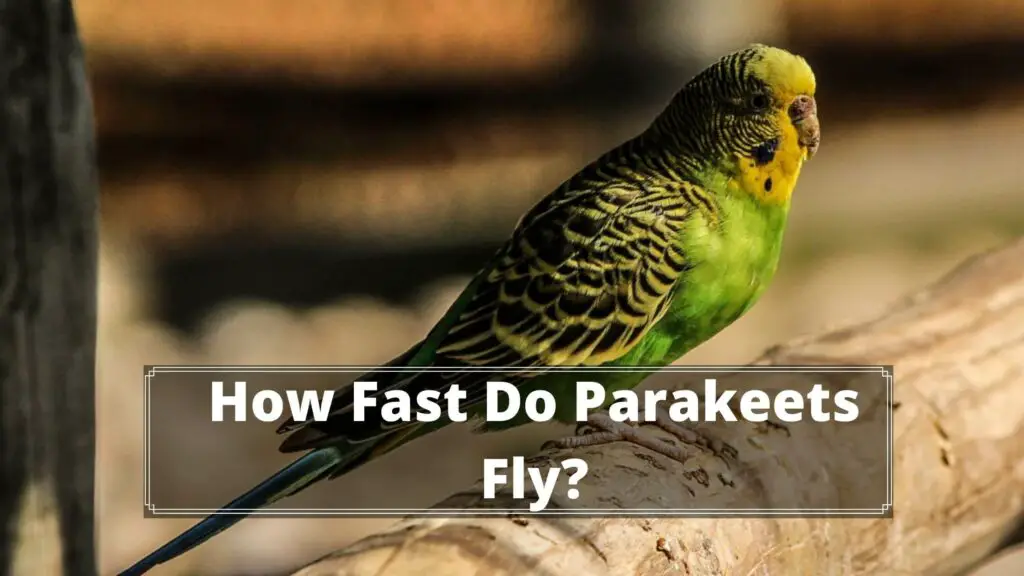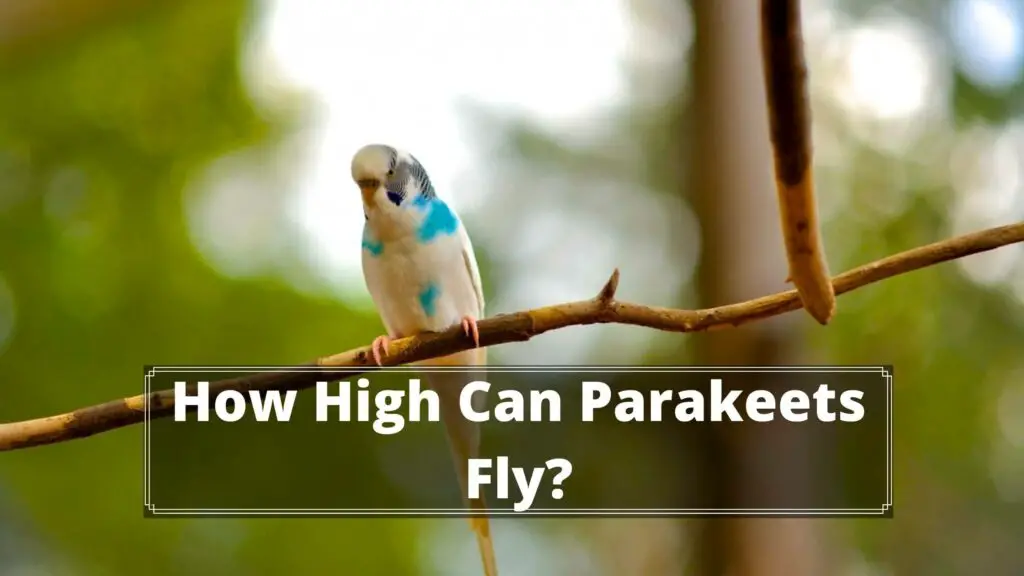
Can Parakeets Fly?
Yes, Parakeets can fly. They usually fly freely in the wild, but they need some time to get comfortable before attempting to fly in your room when you get them home.
Once they get familiar with you and find their environment to be safe and friendly, you can train them to fly by taking them out from their cage.
Unless you give them proper training, it would be a difficult task to catch them and put them inside the cage. Untrained parakeets would require more time to fly outside the cage.
Once they get trained, you can allow them to come out of their cages and fly around in a safe room for about an hour or two. It’s also better to clip their wings for safety.
But make sure to put bird nettings around the windows before letting them out to ensure they do not accidentally fly away from your room.
How Far Can A Parakeet Fly?
Generally, parakeets fly in large flocks in the wild when the weather conditions are right. These little birds can fly up to 25 km at one go.
They may even travel up to a few miles with the air current if they feel threatened. In such a case, you may wonder how to get your little friend to come back home.
Hence, it is essential to watch your Parakeet when they are flying outside your cage.
If your Parakeet somehow escapes your room and flies far away to a place, go there slowly without scaring your buddy.
A trained parakeet will usually come to you if you lure him with a tasty treat.
You may also bring your cage with all its favorite toys and perches to that area. Just leave the cell door open and hide somewhere near, and the chances are that he will return to his cage.
How Fast Do Parakeets Fly?

The flight of a parakeet depends on various factors like its overall weight, feather conditions, overall health, and if it is trained to fly or not.
Parakeets that live in the wild are usually fly faster and higher as they are naturally trained.
But if you have a parakeet at home, flying faster can be challenging, especially if he is not being trained regularly or does not spend enough time flying in the room.
Also, if your Parakeet spends most of the time in the cage, there is a higher chance that it won’t fly faster or would only fly within the range of its cage.
So, if you want them to fly faster and naturally, within a higher range, start training them to fly around your room regularly for about an hour or two. This will eventually increase the speed and capacity of their flight.
Will Parakeets Fly Away?
Yes, Parakeets can fly away if you ignore them out of their cage.
As they are social birds and demand your attention, there are higher chances that they would want to return home soon.
It is essential to clip their wings while training them to fly in your room. This will prevent any chances of flying away and hurting itself while outside the cage.
You can ask the seller if its feathers are already clipped. If not, it is recommended to talk to an avian vet. Note that uneven clipping of feathers can increase the chances of a crash landing.
Also, training your Parakeet to return to its cage at your command is beneficial.
Make sure to close all the doors and windows before letting your Parakeet out. This would prevent any chances of its escape.
And keep all the other pets away from the room where your parakeet flies.
- Interesting Further Reading
- Can Parakeets Tolerate Heat? If So, How Much?
- All About Parakeets Making Noise & Sounds
- Can Parakeets Live Alone? + Do Parakeets Need a Companion
- All About: Parakeets Breeding Behaviour!
Why Can’t My Parakeet Fly?
There can be various reasons why your Parakeet can not fly. One main reason is its wings have been clipped from an early age.
This means it has not spent enough time flying; it does not feel comfortable trying. However, this does not mean that your Parakeet can never fly.
Have patience in the beginning and start forming a close bond with your little friend.
This way, it begins to feel more comfortable and relaxed.
Now, you can open the cage door and let him come out of its cage (after closing all the doors and windows and switching the fans off).
Just allow it to spend some time getting familiar with every corner of your room. Do this for a few hours every single day, and you will surely see your parakeet fly in your room.
How High Can Parakeets Fly?

A Parakeet’s flight depends on various factors like its body weight, its feather conditions, and its overall health.
Parakeets can usually fly very high in the wild, but they are less likely to fly high when held captive. It is the flight feathers of the parakeets that determine the height of their flight.
As the blood feathers in the Parakeets mature, they turn into flight feathers, which are the longest feathers of your Parakeet.
Because of these flight feathers, your Parakeet can fly upwards in the sky and develop the speed of the flight.
When you bring them home, these feathers must be clipped to ensure a safe and smooth flight.
But any kind of injury in their flight feathers may cause difficulty in flying high and with the right speed. Also, make sure that your Parakeet is already capable of flying before trimming down its feathers.
- Recommended Further Reading
- Can Parakeets Talk? If So, What Percentage & Age?
- Are Parakeets Endangered? If So, Why & What Species
- All You Need To Know About Parakeets Mating
- Can Parakeets Fly? If So, How Far?
Summary
Parakeets are capable of flying. These little birds can naturally fly in the wild in large flocks, but if you get them home, they might take some time to fly.
You need to have patience and make them comfortable and relaxed before expecting them to fly. Remember, a strong bond makes the chances of your Parakeet’s flight strong.
Then, after closing all the doors and windows and taking all the safety measures, you can let it out of its cage for a few hours every day, which is good training to help it fly.
Also, ensure that its feathers are clipped.
These birds can fly as far as up to 25 km at one go, and if your Parakeet accidentally escapes your room, you must chase it with its cage and favorite foods. Keep the cell open near the Parakeet and hide somewhere close. There is a higher chance that it will get in.
The more you train your Parakeet, the faster and smoother it will fly.
Also, keep all the other pets away from the room before letting out your Parakeet.
Your Parakeet may find difficulty in flying high if its flight feathers are injured. In that case, you need to talk to an avian pet for a better solution.

Hi, There and Welcome to BirdsNews.com, is here to help you learn and care about pet birds. and this blog is a journal of everything I’ve learned.
